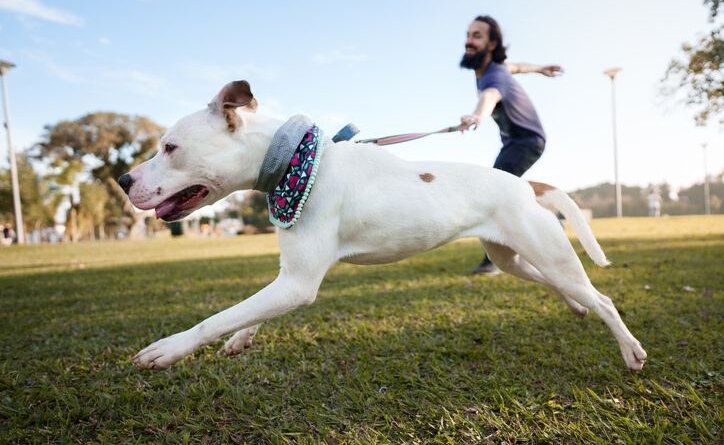Teach Your Dog to Walk Without Pulling

Why do so few people teach their dogs to walk on leash without pulling? It seems like this very basic behavior would be the top priority of anyone who takes their dogs anywhere, but I hardly ever see dogs with good leash manners. That might be an exaggeration, but I swear that a dog who doesn’t pull is the exception, not the rule.
I think that part of the problem is that people take walking together for granted; they just sort of expect their dogs to know to stay near them. But if you’ve ever walked with your dog off-leash, you know that the way most humans walk doesn’t come close to the way that most dogs walk. We tend to move forward with purpose – we know where we are going and we tend to travel at a steady pace. In contrast, left to their own devices, almost all dogs will run ahead, stop to smell things, fall behind, race to catch up, and run ahead, repeating this cycle for any but the longest walks. On very long walks, they might start to walk with us out of sheer tiredness – but the sight of a strange bird or bunny or friend ahead on the trail will stimulate them into another race ahead/fall back/run to catch up sequence.
Also, our walking speed tends to be faster than the walking pace of many dogs, but slower than their usual trot. They have to constantly adjust – walk, trot, walk, trot – to match our monotonous trudge, and that’s annoying! But not nearly as aggravating as the fact that we hardly ever stop to smell anything.
The reality is, most people are just as vexed with their dogs’ leash manners as their dogs are with the humans’ lack of recognition of canine needs and wants. Frustrated dogs, getting few opportunities to do anything enjoyable on the walk, start to tune out and ignore their human’s effort to guide or control them, which tends to lead to the purchase and use of pain-inflicting dog-management tools such as prong, pinch, or choke collars. I call them management tools rather than training tools, because no one seems to use them in a way that would teach the dog to stop pulling; sadly, most dogs I see wearing these collars are still pulling and ignoring their owners! It’s just that the owners have a little more leverage than they did with a flat collar.
If you’re struggling with your dog on walks, don’t delay any longer. Invest in a few private or group dog-training lessons with a force-free trainer who can show you how to make it worth your dog’s while to walk alongside you. You (and your dog) will be so glad you did.




